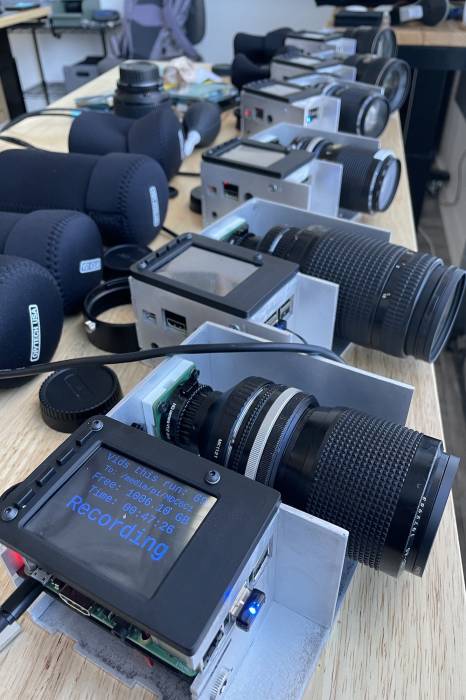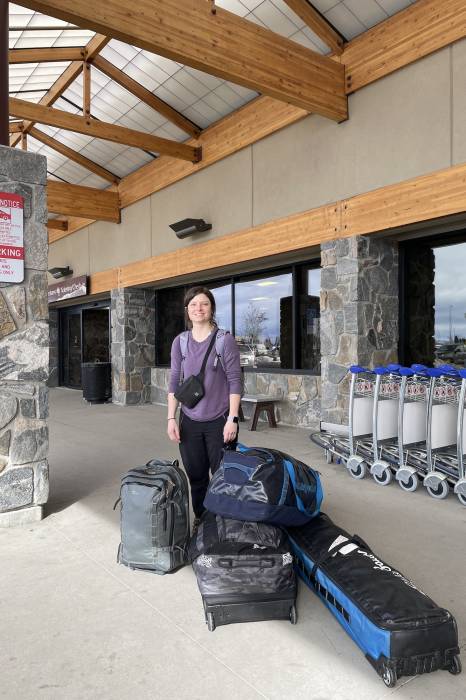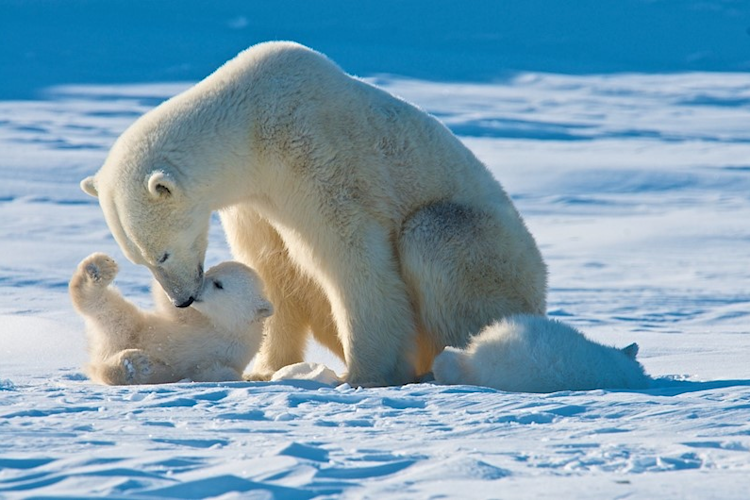The last days before we depart for our annual Maternal Den Study in Norway are always a bit chaotic. My colleague BJ Kirschhoffer and I stay busy carefully packing any remaining research equipment—especially fragile things like the camera lenses for our den cam setups—plus ski boots, our avalanche transceiver, Canada Goose parkas, warm hats, sunglasses, our Garmin inReach, the list goes on. In fact, our expedition packing list is actually the first tab of 33 in our planning matrix! When you are traveling somewhere as remote as Svalbard, and have thousands of details to keep track of, you have to be organized. You could even argue that Svalbard is relatively easy compared to the rest of the Arctic. From our research base in Longyearbyen, we can at least count on a well-stocked grocery store and a gas station, which is not necessarily the case in other parts of the North.

Photo: Kt Miller / Polar Bears International
Raspberry Pi computers with new lenses lined up in the office for testing.
This year a majority of our large equipment is already in Longyearbyen, thanks to our research partners at the Norwegian Polar Institute, saving us from sending a large shipment in advance. Our most significant upgrade this year is a new lens for the Raspberry Pi computers inside our mini den cam setups, with custom software built in collaboration with the San Diego Zoo Wildlife Alliance. The new lenses should increase our zoom distance and add to the sharpness of the video quality of our camera systems. We’ve been testing them in our office in Bozeman, Montana for a few weeks and are very excited about this upgrade, and hopefully the accompanying results.
We also received some great news just before departing. After a very challenging field season last year, with covid complexities, a delayed deployment season due to helicopter availability, and worries that most of the bears we hoped to study had already left their dens by the time our weather windows allowed us to fly, we found out that, after an in-depth look at the time-lapsed images from the camera traps by our partners at the San Diego Zoo Wildlife Alliance, two of our three sites last year did in fact capture mothers and cubs at their den sites! We were thrilled after all the effort that went into last year’s camera deployment and what felt like challenge after challenge, out of our control, we were, in fact, ultimately successful.

Photo: Kt Miller / Polar Bears International
Kt outside the airport in her hometown of Bozeman, Montana with her bags packed for Svalbard.
I begin flying to Norway today, and will meet our project lead, BJ Kirschhoffer, and our Norwegian-based scientist, Joanna Sulich, in just a few days. I’m looking forward to reconnecting with our friends and colleagues in Longyearbyen, including Hilde Falun Strøm of Hearts in the Ice, and being immersed in the landscape and mountains. I think Svalbard is truly one of the most beautiful places on earth, especially this time of year. It’s been pretty snowy there lately so my fingers are crossed for good weather and safe snow conditions for our fieldwork (and maybe a few powder turns on our skis too). We look forward to sharing more updates from the field.















